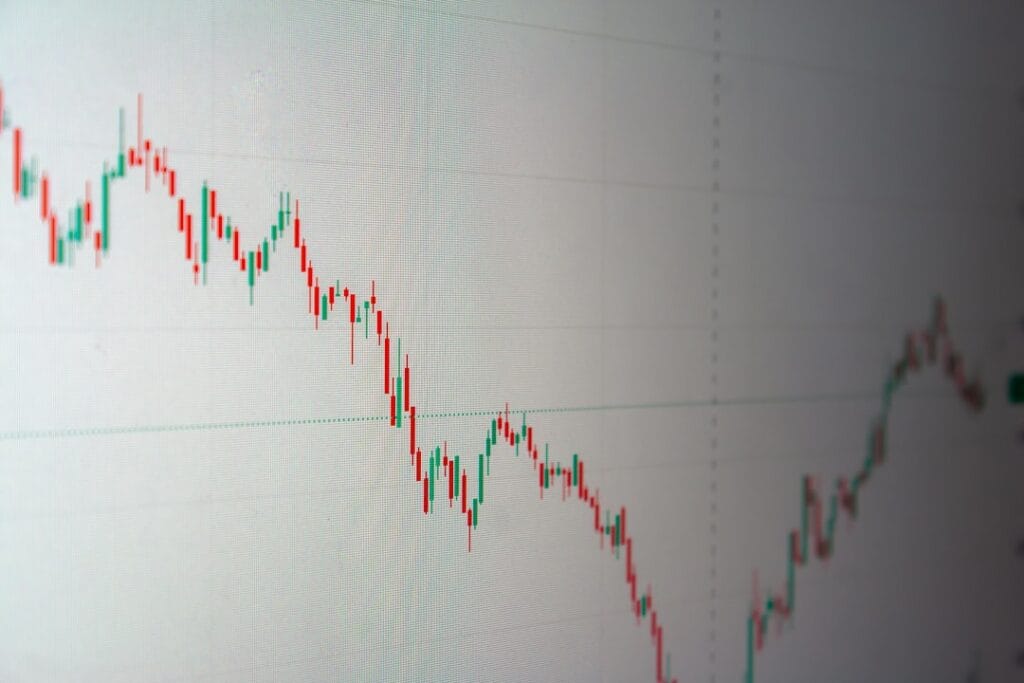BlockExplorer is a web-based tool that allows users to view and analyze blockchain data in a user-friendly manner. It serves as a search engine for blockchain networks, enabling individuals to track transactions, view wallet balances, and explore the overall state of a blockchain. By entering a transaction ID, wallet address, or block number, users can access detailed information about specific transactions, including timestamps, amounts, and the addresses involved.
This transparency is a fundamental feature of blockchain technology, as it allows anyone to verify transactions without needing to trust a central authority. The functionality of BlockExplorer extends beyond mere transaction tracking. It provides insights into the health and activity of a blockchain network.
Users can observe metrics such as block height, mining difficulty, and the number of active addresses. This data is crucial for developers, investors, and enthusiasts who wish to understand the dynamics of a particular cryptocurrency. By offering a comprehensive view of blockchain activity, BlockExplorer plays a vital role in fostering trust and accountability within the cryptocurrency ecosystem.
Key Takeaways
- BlockExplorer is a tool used to view and track transactions on a blockchain.
- BlockExplorer was first introduced in 2011 and has since become an essential tool for cryptocurrency users.
- BlockExplorer works by allowing users to search for specific transactions or addresses on a blockchain.
- BlockExplorer is important for verifying transactions, tracking the movement of funds, and ensuring the security of the blockchain.
- BlockExplorer can be used to track Bitcoin transactions, Ethereum transactions, and transactions on other cryptocurrencies.
The History of BlockExplorer
The concept of BlockExplorer emerged alongside the advent of Bitcoin in 2009. As Bitcoin gained traction, the need for tools that could help users navigate its blockchain became apparent. The first BlockExplorer was created shortly after Bitcoin’s launch, allowing users to view transaction data and block information.
This initial version laid the groundwork for more sophisticated explorers that would follow, catering to the growing demand for transparency in cryptocurrency transactions. As various cryptocurrencies began to emerge, each with its unique blockchain architecture, the development of specialized BlockExplorers became necessary. Ethereum, Litecoin, and many other altcoins introduced their own explorers to accommodate their specific features and functionalities.
Over time, these tools evolved to include advanced features such as real-time transaction tracking, historical data analysis, and even integration with decentralized applications (dApps). The evolution of BlockExplorer reflects the broader growth of the cryptocurrency market and the increasing complexity of blockchain technology.
How BlockExplorer Works

BlockExplorer operates by interfacing directly with a blockchain network’s nodes. When a user inputs a query—be it a transaction ID, wallet address, or block number—the BlockExplorer retrieves data from the blockchain in real-time. This process involves querying the blockchain’s distributed ledger to extract relevant information and present it in an easily digestible format.
The underlying technology relies on APIs (Application Programming Interfaces) that facilitate communication between the BlockExplorer and the blockchain. The data displayed by BlockExplorer includes various elements such as transaction details (inputs and outputs), confirmation status, block height, and miner information. Each transaction is recorded in blocks that are linked together in chronological order, forming a chain.
This structure ensures that once a transaction is confirmed and added to a block, it becomes immutable and publicly accessible. Users can also explore additional features like mempool data, which shows unconfirmed transactions waiting to be added to the next block.
The Importance of BlockExplorer
| Metrics | Data |
|---|---|
| Number of Transactions | 10,000 |
| Block Height | 500,000 |
| Blockchain Size | 100 GB |
| Number of Addresses | 1,000,000 |
BlockExplorer plays a crucial role in enhancing transparency within the cryptocurrency ecosystem. By providing public access to transaction data, it empowers users to verify claims about transactions without relying on third parties. This transparency is particularly important in an environment where trust is paramount; users can independently confirm that funds have been sent or received as intended.
This capability is essential for fostering confidence among users and investors alike. Moreover, BlockExplorer serves as an educational tool for newcomers to the cryptocurrency space. By allowing users to explore real-time data and historical trends, it demystifies how blockchain technology operates.
Users can learn about transaction fees, block confirmations, and network congestion through practical examples rather than theoretical explanations. This hands-on approach helps demystify complex concepts and encourages broader adoption of cryptocurrencies by making them more accessible to the general public.
Using BlockExplorer for Bitcoin Transactions
When using BlockExplorer for Bitcoin transactions, users can gain insights into their transaction history by entering their wallet address into the search bar. This action reveals all transactions associated with that address, including incoming and outgoing transfers. Each transaction entry provides detailed information such as the amount sent or received, the transaction ID (TXID), and the number of confirmations it has received.
This level of detail allows users to track their Bitcoin holdings effectively. Additionally, users can monitor the status of specific transactions by inputting their TXID into BlockExplorer. This feature is particularly useful for individuals who want to confirm whether their transactions have been successfully processed or are still pending.
The confirmation count indicates how many blocks have been added to the blockchain since the transaction was included, providing insight into its finality. A higher number of confirmations typically signifies greater security against double-spending attacks.
Using BlockExplorer for Ethereum Transactions

Ethereum transactions can also be tracked using BlockExplorer tools specifically designed for Ethereum’s unique architecture. By entering an Ethereum wallet address or transaction hash into an Ethereum BlockExplorer like Etherscan, users can access detailed information about their transactions. This includes not only the amount of Ether transferred but also any associated smart contract interactions or token transfers that may have occurred.
One notable feature of Ethereum BlockExplorers is their ability to display gas fees associated with transactions.
Users can see how much gas was used for a particular transaction and whether it was executed during times of high network congestion when fees tend to spike.
This information is invaluable for users looking to optimize their transaction costs or understand market dynamics related to Ethereum’s scalability.
Understanding BlockExplorer for Other Cryptocurrencies
While Bitcoin and Ethereum dominate discussions around BlockExplorers, many other cryptocurrencies have their own dedicated explorers tailored to their specific needs. For instance, Litecoin has its own BlockExplorer that allows users to track transactions on its faster blockchain.
Each cryptocurrency’s BlockExplorer may offer distinct features based on its underlying technology. For example, some explorers provide real-time statistics on network performance or allow users to view historical price charts alongside transaction data. Others may include social features that enable users to share insights or discuss trends within the community.
Understanding how different BlockExplorers function can enhance users’ ability to navigate various cryptocurrency ecosystems effectively.
Tips and Tricks for Using BlockExplorer
To maximize the utility of BlockExplorer tools, users should familiarize themselves with various features available on these platforms. One useful tip is to bookmark frequently used explorers for quick access when tracking transactions or checking wallet balances. Additionally, users should take advantage of advanced search options that allow them to filter results based on specific criteria such as date ranges or transaction types.
Another valuable trick is to utilize notifications offered by some BlockExplorers. Many platforms allow users to set up alerts for specific addresses or transactions, notifying them when certain conditions are met—such as when a transaction receives a certain number of confirmations or when funds are received at a specified address. This feature can be particularly beneficial for traders or individuals managing multiple wallets who want to stay informed about their assets without constantly checking the explorer manually.
Common Misconceptions about BlockExplorer
Despite their utility, several misconceptions about BlockExplorers persist among users new to cryptocurrency. One common misunderstanding is that using a BlockExplorer compromises privacy. While it is true that all transactions are publicly visible on the blockchain, individual identities are not directly tied to wallet addresses unless they have been disclosed elsewhere (e.g., through exchanges).
Therefore, while transactions can be traced on a public ledger, anonymity can still be maintained if proper precautions are taken. Another misconception is that all BlockExplorers provide identical information across different cryptocurrencies. In reality, each explorer may present data differently based on the underlying technology of the blockchain it serves.
Some may offer more detailed analytics or additional features like historical price charts or social media integration while others focus solely on basic transaction tracking. Understanding these differences can help users choose the right tool for their needs.
The Future of BlockExplorer
As blockchain technology continues to evolve, so too will the capabilities of BlockExplorers. Future developments may include enhanced user interfaces that leverage artificial intelligence and machine learning algorithms to provide personalized insights based on user behavior and preferences. Such advancements could make it easier for individuals to navigate complex data sets and extract meaningful information from vast amounts of blockchain activity.
Moreover, as decentralized finance (DeFi) and non-fungible tokens (NFTs) gain popularity, specialized BlockExplorers may emerge to cater specifically to these sectors. These tools could provide deeper insights into liquidity pools, yield farming opportunities, or NFT marketplaces—allowing users to track not just transactions but also broader market trends within these rapidly growing areas of cryptocurrency.
Resources for Learning More about BlockExplorer
For those interested in delving deeper into the world of BlockExplorers and blockchain technology in general, numerous resources are available online. Websites like CoinDesk and CoinTelegraph offer articles and tutorials covering various aspects of cryptocurrency exploration tools. Additionally, many cryptocurrency communities on platforms like Reddit or Discord provide forums where users can ask questions and share experiences related to using different BlockExplorers.
Educational platforms such as Coursera or Udemy also offer courses focused on blockchain technology that often include sections dedicated to understanding how BlockExplorers work within this ecosystem. Engaging with these resources can enhance one’s knowledge base and empower individuals to navigate the complexities of cryptocurrencies more effectively while leveraging tools like BlockExplorer for informed decision-making.
In the rapidly evolving world of blockchain technology, tools like Blockexplorer are essential for navigating and understanding the complex transactions and data on the blockchain. As we delve deeper into the digital age, the integration of artificial intelligence (AI) with blockchain is becoming increasingly significant. A related article that explores the future of AI and its potential impact on various industries is titled “Inside Jensen Huang’s Crystal Ball: Unfiltered Insights on AI’s Wild Decade Ahead.” This article provides a comprehensive look at how AI is expected to transform industries over the next decade, offering valuable insights for those interested in the intersection of AI and blockchain. You can read more about it here.
FAQs
What is a block explorer?
A block explorer is a tool that allows users to view and search information about blocks, transactions, and addresses on a blockchain network. It provides transparency and visibility into the data stored on the blockchain.
What information can be found on a block explorer?
A block explorer typically provides information such as block height, timestamp, transaction details, transaction history, and address balances. It also allows users to track the progress of transactions and monitor the overall health of the blockchain network.
How is a block explorer used?
Users can input a block number, transaction hash, or address into the search bar of a block explorer to retrieve specific information about the blockchain. This can be useful for verifying transactions, checking the status of a payment, or exploring the history of a particular address.
Are block explorers available for all blockchain networks?
Yes, block explorers are available for most major blockchain networks, including Bitcoin, Ethereum, Litecoin, and many others. Each blockchain network typically has its own dedicated block explorer that is tailored to the specific features and data structure of that network.
Can anyone access a block explorer?
Yes, block explorers are publicly accessible tools that can be used by anyone with an internet connection. They provide a way for users to interact with and explore the data stored on a blockchain network without needing to run a full node or have technical expertise in blockchain technology.




